Artist Branding: A Designer’s Guide to an Authentic Identity
May 21, 2025
It’s essential to define your brand as an artist, whether you’re an illustrator, musician, live wedding painter, ceramic artist, or another creative. Without getting too theoretical, artist branding communicates who you are, what you create, and why you make your art.
But how do you build a successful brand as an artist? Here are a few things you should consider.
What Is Artist Branding?
Artist branding is the cohesive identity around your creative work that helps people understand what makes you unique. It represents your creative style, values, and personality.
When you’re just starting out, your branding can look like getting a semi-decent logo from Canva and throwing together a few colors you like (for example, from these cute earthy color palettes).
However, many artists find that they outgrow this surface-level approach pretty quickly and need a more professional and distinctive artistic identity for their social media presence and website.
A strong brand should include:
- Clear mission and core values
- Consistent visual identity
- Specific brand messaging
- Deep understanding of your audience (because your messaging and values must resonate with them!)
In other words, there’s more than just the visual elements that go into it. Clarifying your message and values is a big part of your brand before the pen even hits paper.
For example, many live wedding painters that I have worked with have a keen attention to quality and work hard to use the best materials that will preserve their work as keepsakes. They want to make sure that their commitment to high-quality materials and longevity is conveyed in their brand and website.
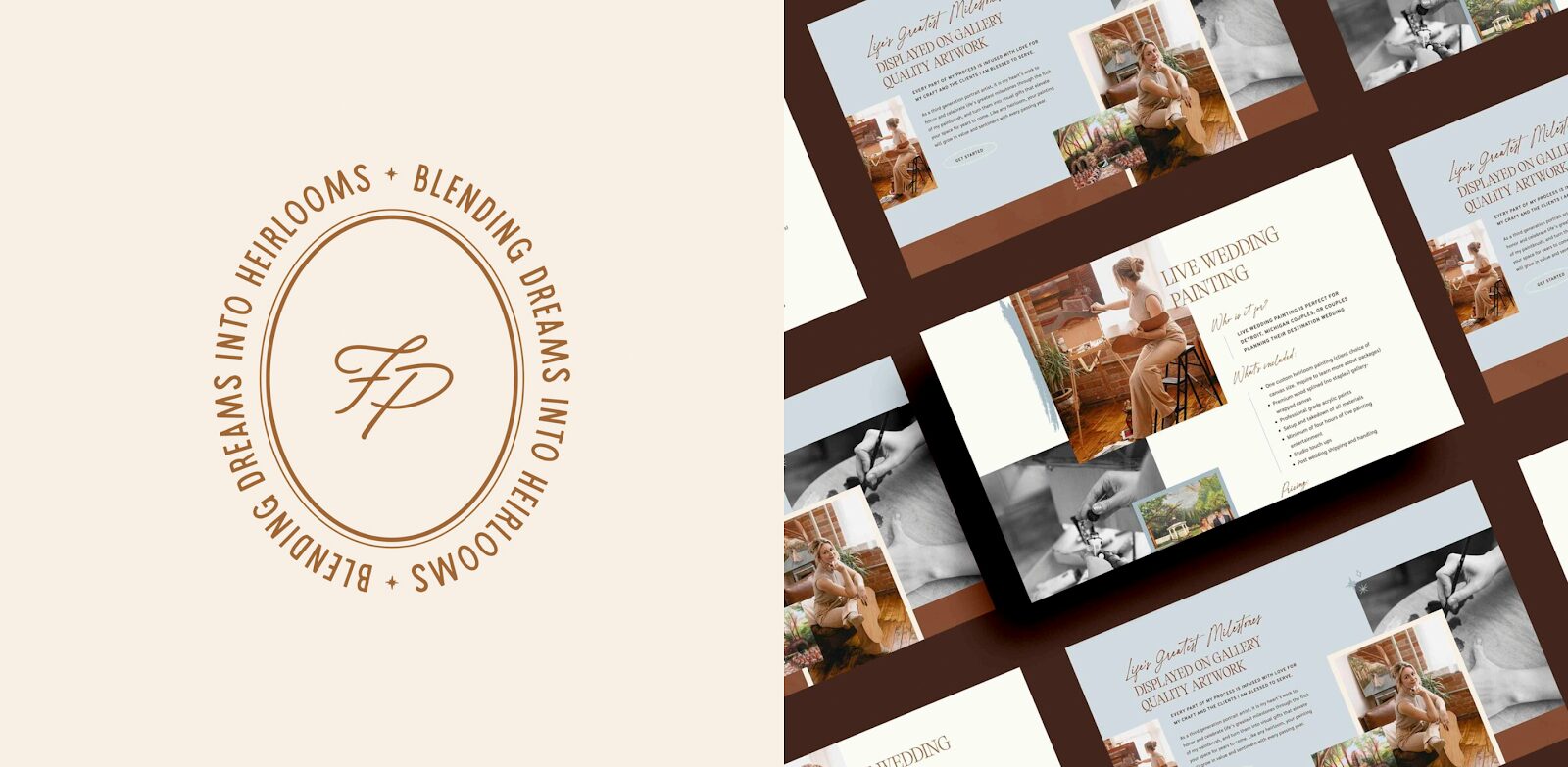
How Do I Brand Myself as an Artist?
The creative economy now accounts for approximately 6% of the global GDP and is expanding at twice the rate of the traditional economy. With so many artists and creatives competing for attention, developing a strong brand helps you stand out and create meaningful connections with your audience.
1. Define Your Purpose
Why do you make art? This question might seem basic, but your answer forms the foundation of your brand. Maybe you create to tell stories that aren’t being told, to capture fleeting moments of beauty, or to help people see familiar objects in new ways.
Write down your answer in a single sentence. For example, as a Showit designer for creatives, mine would be: “I create brand identities and website designs that are rooted in strategy and showcase the heart behind creative businesses.”
This statement becomes your north star when making decisions about your brand.
2. Consider Your Unique Selling Point
Your USP is what makes your work different from every other artist or creative entrepreneur in your field. It’s the specific combination of your style, subject matter, process, and personal background that no one else can replicate.
For example, an illustrator might specialize in botanical drawings with hand-mixed natural inks that bring a distinctive organic quality to their work. Look at what you do differently. Your value proposition could be your materials, your perspective, your technique, or even your personal story.
Resist the urge to imitate other successful artists, even when their approach seems to be working. Research shows that 88% of consumers are more likely to like and support a brand that is authentic.
Your unique perspective and genuine voice will attract the right audience that connects specifically with what YOU bring to the table.
3. Pick Your Brand Adjectives
Choose 3-5 words that capture the essence of your work and how you want people to perceive it. These adjectives will guide your visual identity and the language you use when marketing your work. This is an exercise that I often do with my clients during the branding process.
Here are a few ideas for your brand adjectives:
- Ethereal
- Bold
- Whimsical
- Minimal
- Refined
- Organic
- Vibrant
- Nostalgic
- Avant-garde
- Tactile
- Serene
- Provocative
- Authentic
- Luxurious
- Playful
You can use your brand adjectives as a filter to make brand decisions. For example, if “sophisticated” is one of your words, you wouldn’t use Comic Sans on your business cards or send emails full of exclamation points.
4. Study Your Target Audience
Your brand exists in relation to the people you want to reach. Spend time figuring out exactly who you’re talking to in your branding. For example, a portrait artist might target parents of young children who value tradition and want to capture family milestones.
It’s often helpful to create a detailed profile of your ideal client, including their age, occupation, interests, values, and where they spend time online and offline. It’ll help you get more precise in your marketing.
5. Craft Your Visual Identity
Now for the fun part: creating the visual elements that represent your brand. This includes your logo, color palette, typography, photography style, and any patterns or graphics you’ll use consistently.
Your visual identity should feel like a natural extension of your art. If you paint with bold colors, your brand might use a simplified version of that same palette. Or if your sculptures feature organic forms, your logo might incorporate flowing lines, too.
When you’re just starting out, you can DIY your brand identity. But as your creative business and client roster grow, consider investing in a professional brand designer for a more strategic brand.
The Challenge of Branding Yourself as an Artist
There’s a delicate balance to artist branding. In my experience, it’s a tightrope walk between what resonates with you personally and what resonates with your larger industry and audience.
These are not mutually exclusive things, by the way! You can have both, but it requires you to be thoughtful and sit with it to make sure you’re not just embracing trends and whims.
Your branding should reflect and complement the authenticity of your work, rather than compete too much with it.
Think of your work as a really cool graphic tee or an embroidered vintage dress, and your branding as the rest of the outfit that shows it off and makes it feel put-together.
Why Branding for Artists Matters
Branding for artists matters because it allows you to attract a more specific target audience and charge higher rates for your artwork. When your visual identity, messaging, and overall presence align with what your audience values, you become their obvious choice.
This clarity allows you to charge rates that reflect your expertise because clients see you as the perfect fit for what they’ve been looking for, not an interchangeable service provider.
Artist Branding Examples
The examples below all have different brand identities, and that’s by design! They reflect the artists’ industries, personalities, and artistic styles, and that’s exactly what should happen so that potential clients can get a fast and accurate ~vibe check~ and see if they click with you.
Fuerst Paints
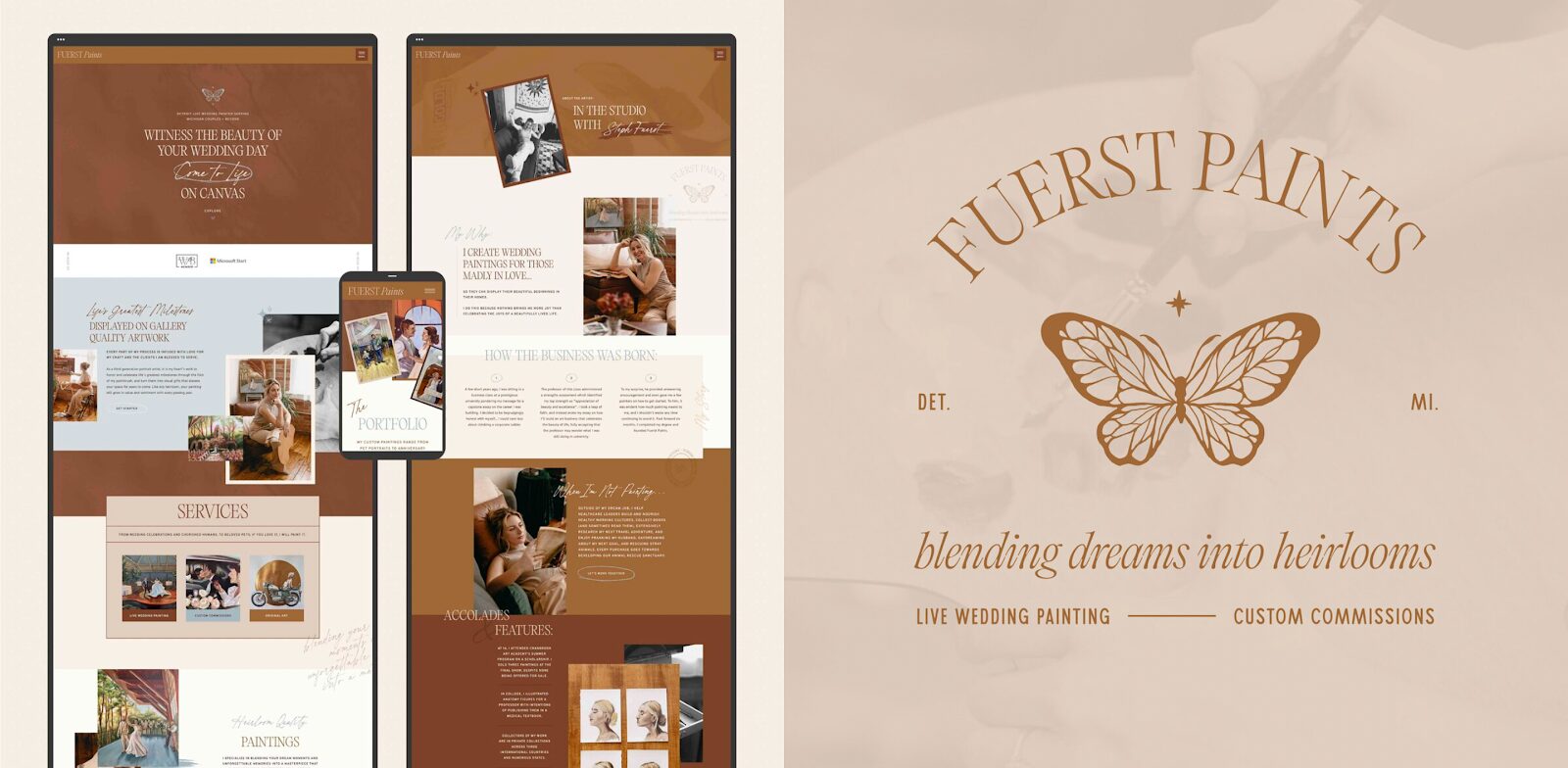
Steph, a live wedding painter at Fuerst Paints, witnesses her clients’ wedding celebrations and creates high-quality, unique keepsakes for them to cherish for a lifetime.
She wanted to create new fine artist branding to attract better clients and develop an aesthetic reflecting who she is as an artist. I crafted her new branding to feel earthy, artisanal, and intimately warm, turning it into a visual expression of her work that felt uniquely hers.
Devin Tormey Art
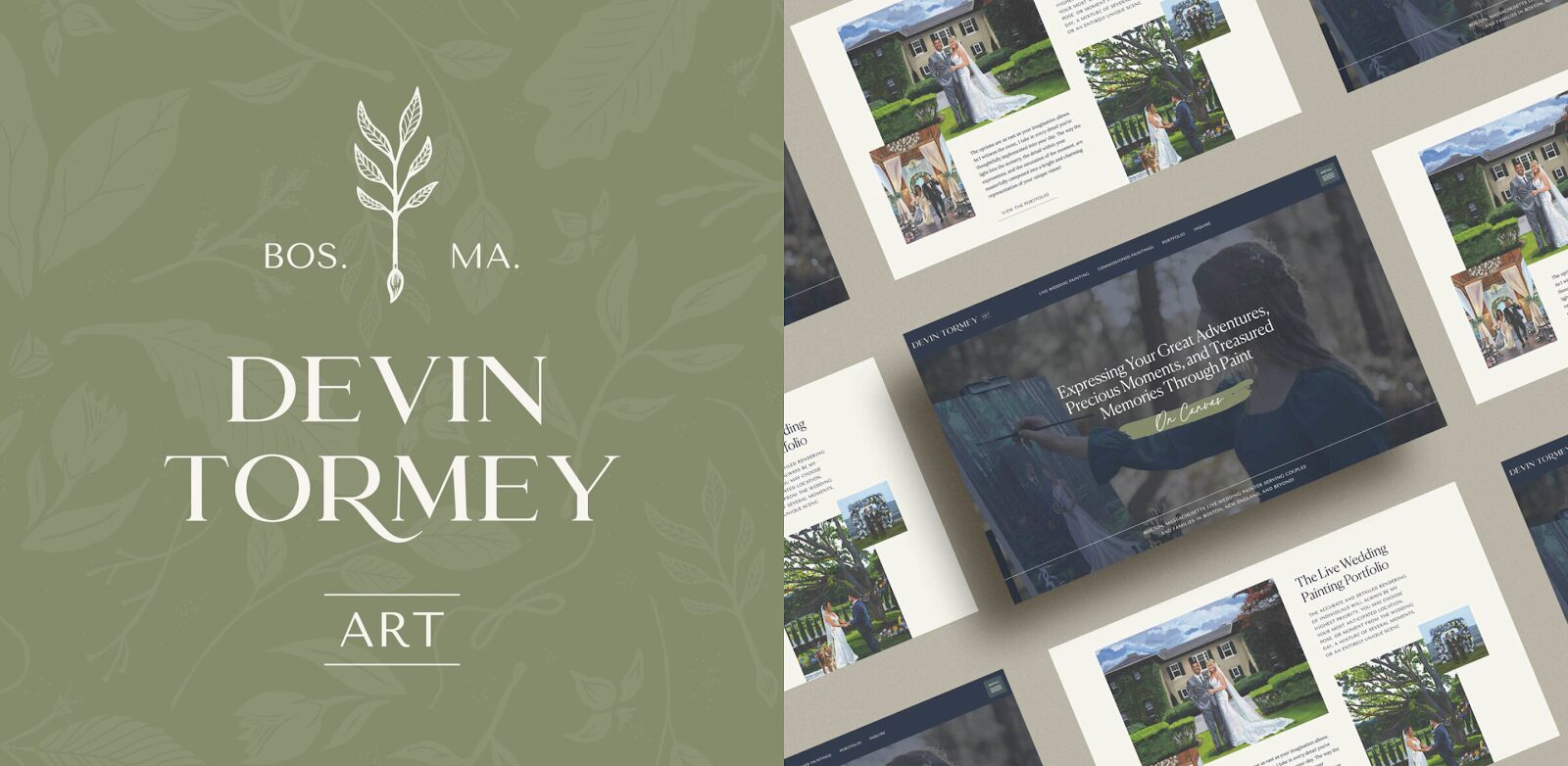
Devin Tormey is a live wedding painter for couples in Boston, New England, and across the US. She captures and creates heartfelt wedding paintings that celebrate unique moments.
Devin’s brand was growing in a higher-end direction, and she needed new visual artist branding to connect with a more sophisticated client base. I designed her brand to be dreamy and earthy, with a touch of adventure.
Heirloom Photo Company

Heirloom Photo Company is a photography studio for branding, headshots, and corporate events in Kansas City, Missouri. Rita’s style blends sophistication, nostalgia, and energy to create images that feel both timeless and fresh.
This photography studio needed new branding to create a deeper human connection with their target audience, and I designed a custom brand identity and website that both communicate confidence, sophistication, and vivacious nostalgia.
Painted by Sloan
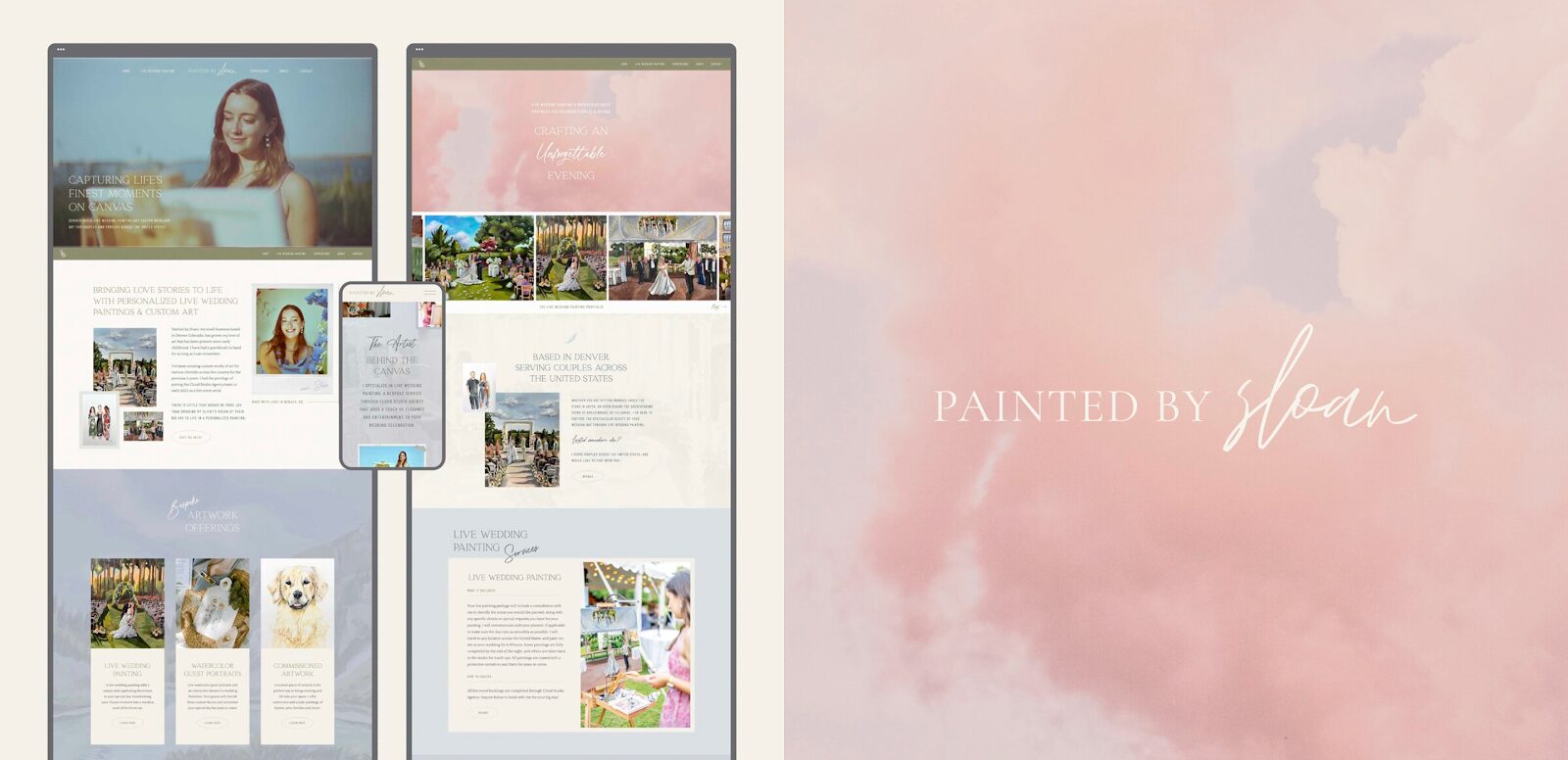
Painted by Sloan is a live wedding painting studio in Denver, Colorado. Sloan’s mission is to capture life’s finest moments at her clients’ celebrations. She felt that her old branding had exhausted itself and needed a refresh that felt refined and reflected her stunning acrylic and watercolor painting portfolio.
I designed a peaceful and eclectic artist personal branding for Sloan that exuded a high-end aesthetic for stronger connections with her ideal clients.
Rachel Vaught Art
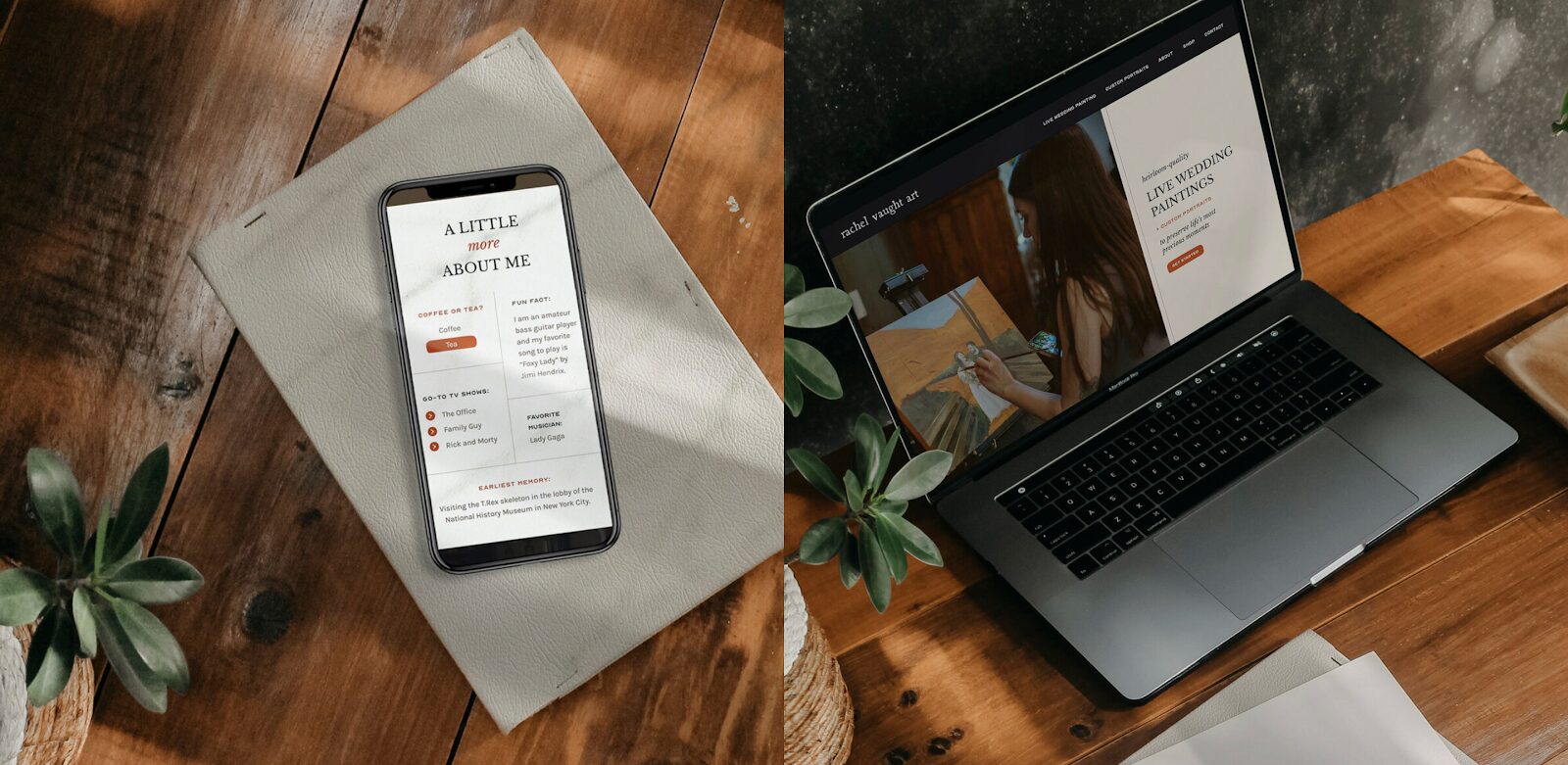
Rachel Vaught is a live wedding and event painter in Columbus, Ohio. She captures the essence of her clients’ wedding celebrations, pets, or loved ones. However, Rachel felt that her old branding didn’t communicate who she was as an artist and failed to build connections with potential clients.
I crafted Rachel’s brand to be bold, moody, textured, and eclectic. Her Showit website, which I designed after her branding was complete, also features an art shop with her prints and originals.
All of the websites in these examples have been built on my favorite website builder for artists, Showit!
FAQs
How Do I Market Myself as an Artist?
Start with solid branding and positioning before jumping into marketing. In my experience, it’s very important to first define your audience, messaging, and visual expression of your brand. Then pick just one or two marketing channels where your ideal clients spend time, such as Instagram, TikTok, or in-person events. I also typically recommend that my clients start a blog to take advantage of SEO (search engine optimization). A clear brand identity makes it much easier to consistently market your business.
How to Rebrand as an Artist?
It might be time to rebrand if: you cringe when sharing your website, you attract the wrong clients, your prices have outgrown your current look, or your style has evolved significantly. Your first brand might have been a DIY project (which is perfectly normal), but working with a designer for your rebrand brings a fresh perspective and professional expertise. They’ll help transition your brand smoothly, keeping what works and improving the elements that no longer serve you.
Who Designs Branding?
A brand identity designer creates the visual elements and strategy that make up your artist brand. They translate your values, style, and personality into visual language through colors, typography, patterns, and graphics.
Artist Branding Services
The right designer can build a bridge between your artistic vision and your audience’s needs. As a brand identity designer who often works with artists, my approach is sophisticated, earthy, and rooted in strategy to make your brand personal and distinctive.
Learn more about my services, browse my portfolio, or get in touch to chat about your project!
About the Author:
Rose Benedict
Owner and Designer, Rose Benedict Design
Rose Benedict is a brand and website designer for therapists, creatives, artists, and service providers. Rose is also a Showit Design Partner and the owner/designer at Rose Benedict Design. She has been a designer for the past 10 years and has worked at a Fortune 15 company and top university in Columbus, Ohio. She brings both her brand/website design and technical experience to small business owners so that they can thrive and deeply connect with their ideal clients. Outside of work, Rose loves reading, pilates, gardening, and traveling (10 countries and counting!).
Rose Benedict Design is a brand and Showit web designer based in Columbus, Ohio, devoted to crafting beautiful, strategic brands for creatives and service providers.
©2022-2024 ROSE BENEDICT DESIGN
Rose Benedict Design is a proud Showit Design Partner.